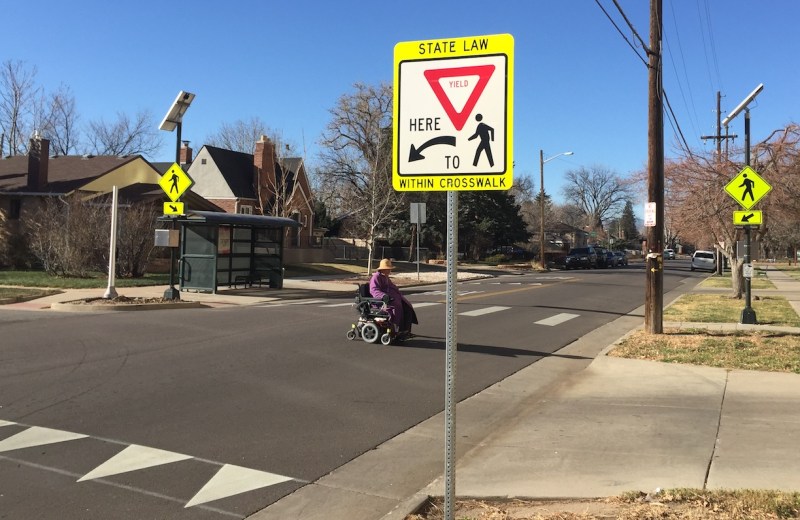Eyes on the Street: Flashing Pedestrian Signals in Sloan’s Lake, Regis, Congress Park, Stapleton, Hilltop

Back in May, Denver Public Works installed a “rapid flashing beacon” at 30th and Downing. The signals are meant to get drivers to yield to people walking and using wheelchairs, and they’re now up and running at five more crosswalks around the city.
The intersections of Central Park Boulevard and Xanthia Way, 51st and Lowell, Josephine Street at the Denver Botanic Gardens, Holly and Cedar, and 26th and Newton now have flashing pedestrian crossings.
To cross using a beacon, you press a button that immediately sets off blinking lights on each side of the street. The lights are fixed bright yellow signs telling drivers to yield to people in the crosswalk.
It’s not the kind of thing you tend to see in very walkable cities, where traffic tends not to move at lethal speeds and drivers act more cautiously by habit, because they expect to see pedestrians everywhere. But as an interim measure for high-speed Denver streets that pass through areas with foot traffic, the flashing beacons make sense.
Here’s a look at the other intersections that got the treatment:




Only one of these streets, Josephine, is on the city’s high injury network. There are certainly less affluent neighborhoods that could use these lights as well — areas the city’s Vision Zero plan calls “communities of concern” in its Vision Zero plan.


